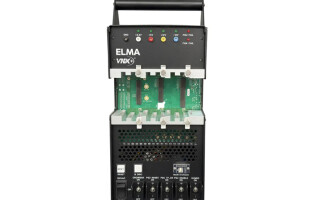Open standards and space applications
StoryJune 07, 2019
One area we don’t equate as often with open standards is the space electronics market. Perhaps it’s because of that market’s traditional aversion to the procurement term commercial off-the-shelf (COTS). Many refer to COTS parts as low-quality or by the old misnomer, “Radio Shack” quality.
But that is actually not the case, as detailed in our Industry Spotlight section this month, in my feature, “Today’s spacecraft and satellite requirements giving COTS a fresh look,” found on page 32. The article details how mega-constellations and small satellites and their low price points are forcing space electronics designers to change their business model to adopt more COTS products to meet the sometimes 80% to 90% cost reductions in requests for proposal for space systems.
The increased demand for COTS will mean faster adoption of open standards. Mission lifetimes for satellites will shrink so designers will be able to take advantage of modern technology. “That pace is so fast today that if you have to make money with 15-life-year satellites you’re going to be bypassed,” says Jerry Festa, Senior Product Line Manager, Space Segment, Curtiss-Wright Defense Solutions (C-W’s Newtown, Pennsylvania facility) in the article.
While COTS may not have a heritage – so to speak – in space applications, embedded open standards absolutely carry that heritage, and their footprint in space is only growing.
Take CompactPCI, a PICMG specification, for example: The 3U CompactPCI form factor has been flying in space for decades and has a well-respected pedigree via offerings still in orbit years later from companies such as Aitech’s SP0 single-board computer (SBC) and the Data Device Corporation (DDC) SCS750 SBC – going back to when it was Maxwell Technologies.
Serial versions of embedded standards will be the next wave to hit the space market, most likely in 3U versions to meet the reduced size, weight, and power (SWaP) requirements of small sats.
Compact PCI Serial Space, which is based on CompactPCI Serial, is currently offered by Men Mikro Systems for some European space platforms. “Existing international standards … save time and cost during both development and during the project life cycle,” says Manfred Schmitz of MEN Mikro, in an article from PICMG Systems and Technology titled “CompactPCI Serial reaches out into space.”
Many future space SBCs will also be based on the VITA SpaceVPX standard, VITA 78. “The SpaceVPX VITA 78 specification is the first open standard developed specifically for space applications and builds off the success of the OpenVPX platform,” writes Jennifer Keenan, Senior Product Marketing Manager for the Mercury Systems Microelectronics Secure Solutions group (Phoenix, Arizona) in a recent article in VITA Technology titled “SpaceVPX--enabling the next generation of satellite constellations.” “SpaceVPX strengthens the OpenVPX specification with additional key features such as “fault tolerance by mitigating vulnerabilities of a single-point failure, dual-redundant power, and management distribution and diagnostic support” while maintaining compatibility with OpenVPX components and connector pinouts, she adds.
The latest update on VPX is VITA 78.1 – SpaceVPX Lite Systems – which emphasizes 3U module implementations. “The most significant change from SpaceVPX is to shift the distribution of utility signals from the SpaceUM to the System Controller to enable a radial distribution of supply power to up to eight payload modules,” according to Jerry Gipper, executive director of VITA. “The working group has developed a draft document of the standard that is currently under review.”
An ecosystem is starting to build up around SpaceVPX as well as in areas such as data recording. Dedicated data-recording systems previously developed are unsuitable for these SWaP-constrained, lower-cost satellites, Keenan notes in her article. In this regard, Mercury Systems is developing a family of SpaceVPX products including a space-grade storage drive in a 3U SpaceVPX form factor, she states. To learn more about the VITA 78 SpaceVPX specification, visit the VITA website.
For more on standards, see the last part of our 3-part series on the tri-service convergence on a common open architecture through such programs as the Sensor Open Systems Architecture (SOSA). The article – titled “Development of the next-generation OpenVPX-based embedded system standard: A tri-service convergence of approaches: Part 3 of 3” – is on page 40. The authors are Mike Hackert of the U.S. Navy’s Naval Air Systems Command (NAVAIR), the Navy lead for SOSA; Dr. Ilya Lipkin, Air Force Life Cycle Management Center (AFLMC), and Ben Peddicord, U.S. Army Combat Capabilities Development Command [CCDC, formerly CERDEC].





